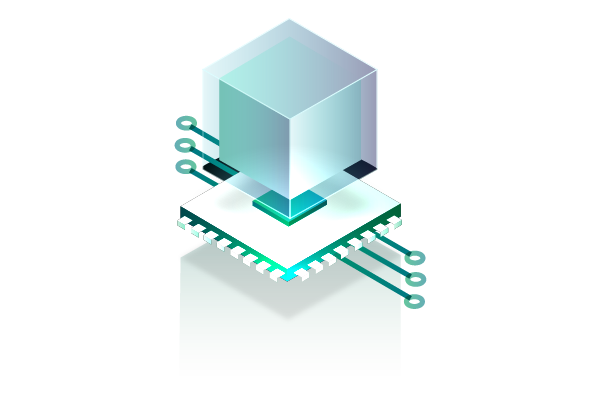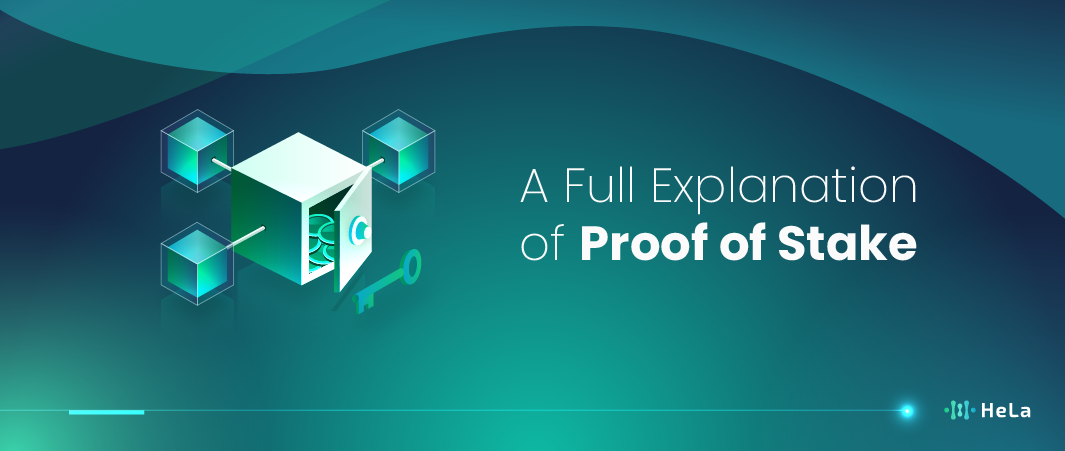In this article we explore how Proof of Stake works, its impact on scalability, and what the future holds for this innovative mechanism. Proof of Stake (PoS) is redefining the landscape of blockchain technology by offering a more efficient and environmentally friendly approach to achieving consensus. This shift significantly reduces energy consumption and operational costs, making it a compelling choice for modern blockchain networks.
Understanding Proof of Stake is crucial for anyone interested in the evolution of blockchain technology. As blockchain networks grow and the demand for scalable solutions increases, Proof of Stake offers significant benefits by enhancing transaction speed and reducing costs. Unlike the traditional Proof of Work (PoW), which relies on extensive computational power, Proof of Stake selects validators based on the amount of cryptocurrency they stake as collateral.
Our detailed exploration covers the fundamental principles of Proof of Stake, its advantages over Proof of Work, and the challenges it faces. By reading this article, you’ll gain valuable insights into how Proof of Stake is shaping the future of decentralized networks and paving the way for broader adoption and innovation in the blockchain space.
What is Proof of Stake?

Proof of Stake (PoS) is one of the consensus mechanisms used in the blockchain technology to confirm transactions and produce new blocks. While PoW uses mathematical problems which are solved by miners, Proof of Stake selects the validators that will create blocks based on the quantity of cryptocurrency they deposit in the network, through a process called “staking”.
The chosen validator will check and validate the transactions and create a new block in the blockchain. Instead, they earn a specific amount of coins for their efforts. This concept is based on the fact that it relies on the ownership of assets rather than the computing ability.
Proof of Stake is expected to have some limitations of PoW, such as energy consumption, fixed. Some of the main disadvantages of using Proof to Work (PoW) are that it demands more computational capacity and extremely high energy usage for mining blocks. On the other hand, Proof of Stake enables blockchains to have an exceptionally low energy cost since there is no complex computational procedure involved. This makes Proof of Stake a more viable and efficient option and especially with growing blockchain platforms and high transaction volume.
Additionally, Proof of Stake supports increased decentralization by enabling the participation of more people in the network as validators. We see that in PoW only the most sophisticated participants with powerful mining hardware and considerable computational capacity can strive to mine new blocks. However, in Proof of Stake, anyone with a sufficient number of coins to make them a stake can become a validator. It means that more users can participate and help in the securing and voting in the network without necessarily having to invest highly in hardware.
However, Proof of Stake also has its own flaws and adversities it has been exposed to. An important criticism is the potential for the economic problem in which owning more coins automatically gives more voting rights to some validators. To overcome this, there have been some improvements and variants that have been made on Proof of Stake which include: Delegated Proof of Stake (DPoS) and the slashing mechanism.
This is a mechanism which encourages dishonest validators to cease their actions. Such disadvantages are likely to be addressed in the future as Proof of Stake advances, thus enhancing its universality The author believes that as new advancements continue to emerge in the blockchain arena, Proof of Stake is also set to be refined in such a way that it will indeed become applicable widely in the future.
Proof of Stake (PoS) Implementation in Blockchain

Proof of Stake (PoS) is an innovative working model aimed at being a substitute for the Proof of Work model that is currently used and requires a considerable amount of energy consumption. In Proof of Stake, the process of transaction confirmation as well as the process of blocks generation is performed by a chosen number of validators in proportion to the amount of cryptocurrency they have staked or have put as guarantee.
The more coins one holds and involves in staking, the greater the probability of being chosen as a validator, and in return being rewarded with added coins. This way, the validation process is more efficient and less detrimental to the environment compared to Proof of Work, which demands large amounts of calculations to find hashes.
Also Read: Proof of Stake (PoS): The Definition, Benefits and Challenges
It also means that the implementation of Proof of Stake is not only a measure to minimize the energy consumption but also prevents the centralization of the network and the participation of a large number of users. Similar to Dark Mining it concentrates the computational power needed to solve the blocks primarily within the hands of those with the means to purchase better hardware in Proof of Work. On the other hand, Proof of Stake enables those with less capital to also be included in consensus, given they possess sufficient coins to stake. This benefits the network and decentralizes it, making it less vulnerable to certain forms of attack.
The integration of Proof of Stake in a blockchain system has several basic features which include staking, slashing, and delegation. Staking is the act of delegating a specific number of coins to the network to become a validator or to support a validator. Slashing is a penalty system developed to penalize malicious validators or those that attempt to deceive the system by slashing a portion or the entire value of the staked coins. Delegation means that the user who does not wish to become a validator can support other validators by transferring their coins, which will allow them to get a part of the reward without running their node.
The benefits of Proof of Stake have led to its adoption by new blockchains and some of the blockchains that employed Proof of Work have switched to Proof of Stake, like Ethereum. Proof of Stake makes blockchain networks not only more efficient and resource save but also widely accessible, and more people can be involved in the blockchain space without investing in expensive hardware and energy. This is a major advancement that marks the progress of blockchain technology from a system that was beneficial to a few to one that will benefit everyone in the long run.
Proof Of Stake Impact on Scalability

Through understanding how Proof of Stake (PoS) affects the scalability of a blockchain, one will have better knowledge on how a blockchain handles large numbers of transactions. However, unlike in Proof of Work (PoW), the process of validation of transactions in PoS does not call for harnessing ample computational power.
This implies that blockchains under PoS are more effective in terms of undertaking transactions more frequently and at a cheaper price relative to PoW. Since validators are peers selected proportionally to the coins they keep in a staking pool, the chances for competitors to generate new blocks are greater, thus increasing throughput or the number of transactions per second (TPS).
The second area that PoS contributes to the technology’s scalability is through decreasing block time, the amount of time it takes to create a new block for the blockchain. In PoS, the block time depends on the number of coins staked, but this could commonly take less time than PoW since block mining does not involve complex computational processing. This is very possible, as the number of users who are involved in the transaction of any goods or service increases, more transactions can be facilitated within the same time period by the network.
Also Read: 15 Best Crypto Staking Platforms in 2024 (Updated List)
Further, PoS enables more effective in putting into practice other improved methods of group transactions like sharding. In this method, the blockchain network is split into numerous shards and each shard has the capacity to process transactions separately. PoS is most suitable for this model as each shard can have their own validators who perform transaction validation while having to agree on the overall network consensus. Therefore, PoS not only enhances TPS but also provides horizontal scalability where the network capacity can add more shards.
Nonetheless, there are issues that have to be solved when it comes to scalability as the PoS system has its benefits. For instance, in a PoS network, members who own huge amounts of coins can dominate the consensus process and this causes the network to be centralized. Furthermore, as PoS is more efficient, the benefits of higher speed and higher throughput rate entail higher security threats if properly addressed. Therefore, an increase in the level of scalability through PoS should be accompanied by measures to address security and decentralization that will allow the blockchain network to expand while not distorting its key values.
The Future of Proof of Stake

Many consider Proof of Stake as the foundation for the progression of the blockchain, primarily due to its efficiency in terms of energy consumption and its potential to accommodate much higher traffic rates. With increasing concern to the environment starting to be embraced around the world PoS is much more friendly to the environment than PoW.
Thus, in the future, a gradual migration of more blockchains, including those already large-scale, to PoS or other modifications of this mechanism can be expected. The change of use from the original Ethereum to the upgraded Ethereum 2.0 is one example of how PoS will eventually be integrated as the new paradigm of consensus in the blockchain network to provide more decentralization and efficiency.
Furthermore, PoS offers new avenues for creativity in Blockchain technology advancement. By having a lighter consensus mechanism, developers can dedicate resources towards new areas of the ecosystem such as more compound smart contracts, DeFi, and layer 2 technologies without the worry of computational constraints and transactions per second limitations. The future of PoS also involves staking where ordinary coins are held in the block Chain network and rewarded for holding them to secure the network without the need for expensive hardware.
However, the future of Proof of Stake also has drawbacks and it will be very crucial to focus on the problems for PoS such as security and the centralization of some PoS. This brings criticism of PoS to a reality that there is a possibility that by validators holding many coins, the network might be centralized. Consequently, ongoing improvements in the PoS consensus algorithm are geared towards making the protocol more inclusive and less susceptible to various types of attacks, including delegation enhancements, validator randomness, and compensation-oriented systems.
As for where PoS is headed, it will largely depend on how stakeholders of the blockchain industry address these issues. If PoS can progress further but only at preserving security, decentralization, and more importantly fairness, then PoS will not only be the consensus mechanism of the future but also the innovation platform of the future that provides the foundation for the even more elaborate and comprehensive use of blockchain in the future.
This could potentially open the door for the wide-spread implementation of blockchain within industries that require precision and integrity for improving trust, accountability and transparency such as the financial industry or supply chain.
Conclusion
Proof of Stake (PoS) Explained: Concepts, Implementation, and Future Trends demonstrates how PoS is redefining blockchain consensus mechanisms by providing a more efficient and eco-friendly alternative to Proof of Work (PoW). By selecting validators based on the amount of cryptocurrency they stake, PoS significantly reduces energy consumption and operational costs. This shift not only enhances scalability, allowing blockchains to process more transactions with lower fees, but also fosters greater inclusivity by enabling a broader range of participants to contribute to network security.
As we look to the future, PoS promises to be a central component in the evolution of blockchain technology. With ongoing advancements and refinements, PoS is expected to overcome current challenges and set new standards for decentralized networks. Its ability to balance efficiency, security, and decentralization makes it a key player in driving the future of blockchain applications, paving the way for more sustainable and scalable solutions across various industries.
Disclaimer: The information provided by HeLa Labs in this article is intended for general informational purposes and does not reflect the company’s opinion. It is not intended as investment advice or a recommendation. Readers are strongly advised to conduct their own thorough research and consult with a qualified financial advisor before making any financial decisions.

